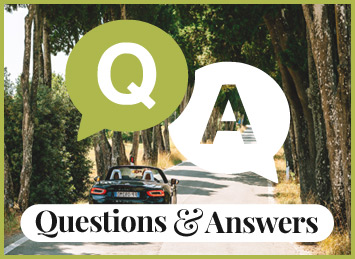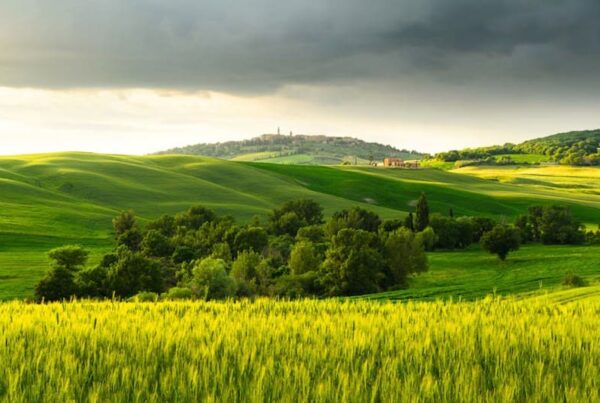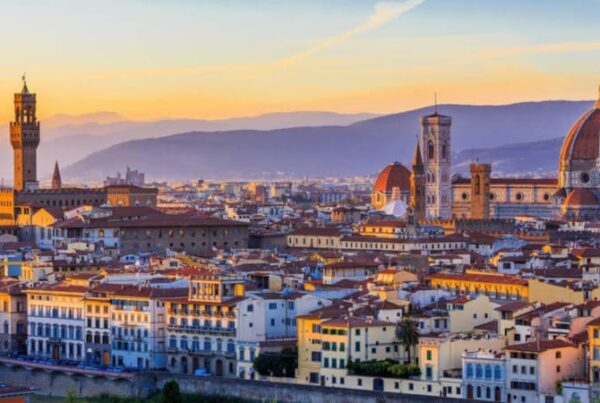Tuscany boasts a rich and priceless artistic and cultural heritage, made of perfectly preserved villages and historical towns but also of endless spectacular works of art to be found in museums all across Tuscany. Throughout the region there are more than 500 museums!
Tuscany is so rich in art and culture that one would have to live twice to visit all!
Most works of art, however, are to be found in Florence, that, between the 15th and 16th century became the cradle of the Renaissance.
To have a sort of guideline and to not get lost among the huge quantity of museums of all kinds, here is a list of the main museums to visit in Tuscany.
The Gallery of Uffizi in Florence
The Palace of Uffizi, built by Giorgio Vasari at the end of the 16th century, is home to the Uffizi Gallery, one of the most famous museums in the world. The Uffizi Gallery displays paintings on wood and canvas, antique statues, and masterpieces of art of all times.
Just remember the names of Giotto, Michelangelo, Piero della Francesca, Raffaello, Botticelli and many others. Discover the top masterpieces at the Gallery of Uffizi!
Galleria Palatina at Palazzo Pitti – Florence
The Palatine Gallery in Florence, located in the left wing of the majestic Palazzo Pitti, was created between the late eighteenth and the early nineteenth century, from the noble family of the Lorena who settled here masterpieces derived mainly from the collections of the Medici.
This is an outstanding collection that includes works by Titian, Raphael, Pietro da Cortona, Rubens, Caravaggio and other Italian and European masters of the Renaissance period and of the seventeenth century. The paintings, with their sumptuous frames, cover all the walls of the rooms, according to the tradition of the 17th century collections.
The Royal Apartments, Appartamenti Reali, occupy the fourteen magnificent rooms of the right wing of the Palace, and are set up with furniture and works of art from the sixteenth to the nineteenth century.
While at Palazzo Pitti, do pay a visit to the wonderful Boboli Gardens behind the Palace, a splendid example of Italian Renaissance gardens.
The Bargello Museum – Florence
The Bargello Museum in Florence houses a remarkable collection of sculptures and “minor arts”.
The museum is located in an impressive building, built in the mid-thirteenth century for the Capitano del Popolo, which later became the seat of the Council of Justice.
Starting from 1865, were transferred to the palace some of the most important Renaissance sculptures, including masterpieces by Donatello, Luca della Robbia, Verrocchio, Michelangelo and Cellini.
The Gallery of Accademia – Florence
The Accademia Gallery in Florence owes its popularity to the famous David by Michelangelo Buonarroti, probably the most famous and well known sculpture in the all world.
Here, you can admire other works by Michelangelo, like its impressive unfinished Prigioni, along with a few other great works.
Inside the gallery is also housed the Museum of Musical Instruments, which displays many artifacts belonging to the historical collection of the Conservatorio Luigi Cherubini.
Museo di San Marco – Florence
The Museum of San Marco was founded in 1436 and designed by Michelozzo, one of the most famous architects of the time. The Museum of San Marco was formerly a Dominican convent; also famous for some of the events that involved saw the friar Girolamo Savonarola.
The museum Museo di San Marco houses some unique paintings in the world, such as those by Fra Beato Angelico, famous Renaissance painter that decorated many rooms of the convent with its beautiful frescoes.
Maec – Palazzo Casali in Cortona
The Museum of the Etruscan Academy and of the City of Cortona, MAEC, houses the largest collections of some members of the Etruscan Academy. The museum was founded in 1727 and displays wonderful collections of archaeological finds dating from the Etruscan and Roman times. Particularly cured are also sections devoted to ancient Egypt and medieval times of Cortona.
Artists like Luca Signorelli and Gino Severini, are honored in the museum with the exhibition of works of art of the Renaissance period. The objects stored in the various rooms of Palazzo Casali tell the history, politics, culture and society of Cortona from its origins until the modern age.
Museo Civico – Siena
The Civic Museum is housed in the Palazzo Pubblico of Siena, facing Piazza del Campo. It was built largely between the end of the 13th century and the first half of the 14th century, to host I Nove Signori, the Nine Lords, who ruled the Republic of Siena.
It houses precious frescoes of the Sienese school, like the Majesty by Simone Martini, and the Allegories of the Good and Bad Government by Ambrogio Lorenzetti
Santa Maria della Scala – Siena
Santa Maria della Scala is a museum complex, located in the heart of Siena, just in front of the Duomo. Formerly one of the oldest and largest hospitals in all Europe, is now an important museum hosting a great variety of collections ranging from ancient to modern times, alternating monumental rooms, narrow corridors, labyrinthine tunnels dug into the tuff and large spaces with vaulted brick ceilings.
In its huge extension there are varied historical and artistic treasures, which can be read as a summary of the city and its history, covering a span of about a thousand years .
The main and most precious attraction is the Pellegrinaio, the Pilgrim’s room, the most important and original fresco cycle of the Sienese school.
The frescoes were painted by various artists over the years 1440 and 1444, and represent and exalt the mission of the hospital.
Museum of Alabaster in Volterra
Alabaster manufacturing is an ancient art with very ancient origins; it was used by Etruscans to create urns, and then became the raw material for making capitals, tabernacles, vases and other objects of common use.
Housed in a former Augustinian monastery dating from the twelfth century, the museum is a real art collection of wonderful alabaster manufacturing, which also houses paintings and antique furniture.
The Alabaster Museum of Volterra brings together a large number of works from the Etruscan period, through the Middle Ages and the eighteenth century up to the present day.
Guarnacci Museum – Volterra
The Guarnacci Museum in Volterra is one of the oldest and most important Etruscan museums in Italy, actually one of the most ancient public museums in Europe! It preserves the materials derived from excavations in Volterra and its territory.
The core of the museum consists of about 600 Etruscan funerary urns, designed to collect the ashes of the dead. The most significant urns are in alabaster, material easy to shape and to being painted. Amongst the most popular exhibits is the Ombra della Sera (Evening Shadow), a little Etruscan bronze statue with its elongated shape, and the beautiful Urna degli Sposi, Bridal Urn.
That’s one of my favorite museums in Tuscany 🙂
The list of Museums in Tuscany is very long, with exhibits ranging from prehistoric art to modern times, so just choose according to your personal tastes:-) I particularly love the Etruscans and the Renaissance period, and you? 🙂




